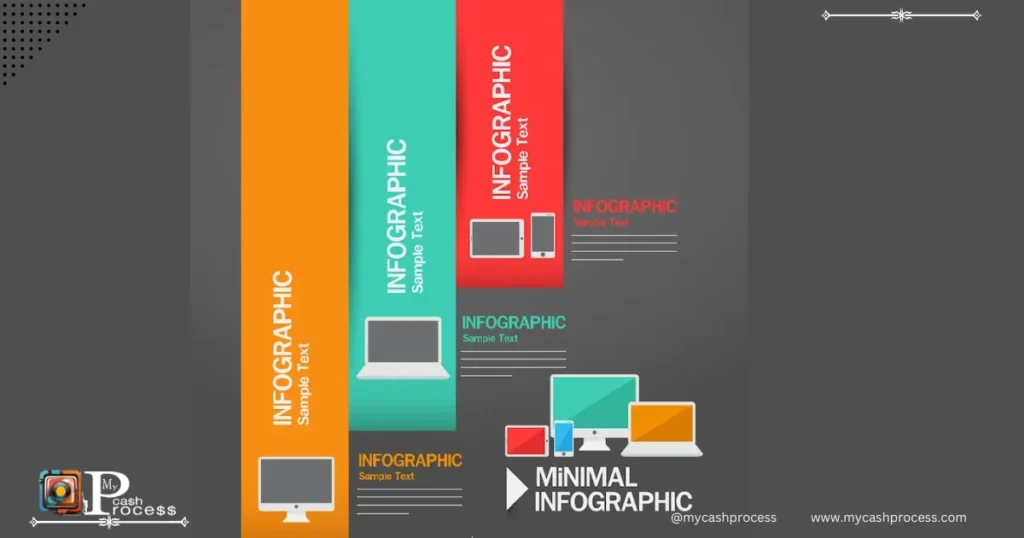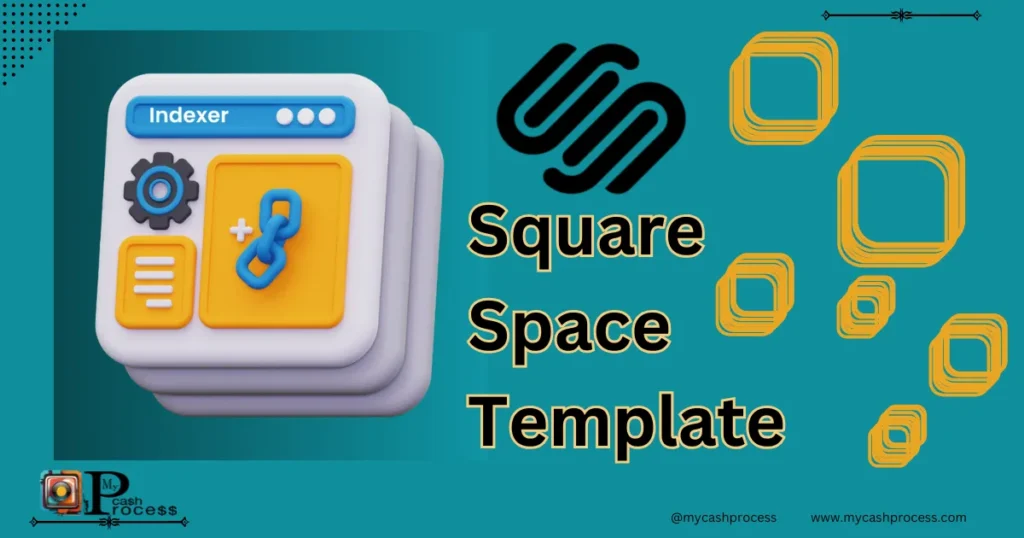Introduction
In today’s digital age, the appearance of your website plays a crucial role in your online success. When it comes to website creation, platforms like Squarespace offer powerful, customizable website templates that can help you build a stunning online presence. However, one of the most critical aspects of building an online presence is understanding how to make Squarespace website templates that are not only visually appealing but also functional, user-friendly, and aligned with your brand identity.
This guide will walk you through everything you need to know about how to make Squarespace website templates, from understanding the basics to mastering the customization process and launching a template that is both beautiful and effective. Whether you’re creating a website for your business, blog, portfolio, or personal brand, mastering Squarespace templates will give you the flexibility and control you need to create a website that truly stands out.
Throughout this guide, we will focus on key aspects like how to find Squarespace template of website options, the process of creating a website template with the four corners having boxes, and the importance of customizing templates to suit your unique needs. Let’s dive into the world of Squarespace website templates and explore how you can master the art of customization.
Quick Access Guide
1. Understanding Squarespace Website Templates
What are Squarespace Website Templates?
Squarespace is a website-building platform that offers a wide range of pre-designed templates. These templates serve as the foundation for building a website, providing a framework that can be customized to suit specific needs. How to make Squarespace website templates begins with understanding these base templates, as they lay the groundwork for your website’s overall design and structure.
Squarespace templates are built using a modular design approach, meaning they come with various layout blocks and pre-set styles that allow for customization without requiring extensive coding knowledge. Whether you are creating a personal portfolio, an e-commerce site, or a corporate landing page, Squarespace templates are designed to be adaptable to different industries and purposes.
How to make Squarespace website templates
Why Are Squarespace Templates the Foundation of a Professional Online Presence?
One of the reasons Squarespace has become a popular platform for building websites is that it provides professional-grade templates that are optimized for design, functionality, and user experience. Templates are crucial in creating a cohesive and well-organized website, and the templates offered by Squarespace are already equipped with high-quality design elements such as typography, color schemes, and layout structures that make your website look polished from the start.
By choosing a template and understanding how to make Squarespace website templates even more personalized, you can establish a strong, professional online presence quickly and easily. Templates help eliminate the guesswork in web design, ensuring that the website is both functional and aesthetically pleasing.
The Flexibility of Customizing Squarespace Website Templates
What makes Squarespace templates even more powerful is the level of customization they offer. How to make Squarespace website templates unique is all about altering pre-built structures to align with your brand’s identity. With Squarespace’s drag-and-drop interface, users can easily change the layout, colors, fonts, images, and content blocks of their templates. Whether you’re a beginner or an experienced web designer, the customization process is intuitive and offers endless possibilities.
You can start with a basic template and make it your own by adding or removing sections, adjusting the navigation, changing the typography, and even integrating third-party tools like custom code, Google Fonts, or widgets. This flexibility ensures that your website not only looks great but also performs well.
2. How to Make Squarespace Website Templates: Getting Started
Key Steps to Begin Building Your Template
Before you start customizing a Squarespace template, you need to understand the fundamental steps involved in the process. The first step is to select a template that fits the general structure of your desired website. Once you’ve chosen the right template, you can begin customizing it to match your vision.
Here’s a step-by-step guide to get started:
- Create an Account: Sign up for Squarespace if you don’t already have an account. Squarespace offers a 14-day free trial, allowing you to explore its features before committing.
- Choose a Template: Browse the library of templates to find one that aligns with your goals. There are templates for different industries, including business, personal websites, blogs, and portfolios.
- Customize the Layout: Adjust the layout of your site to fit your content. This includes modifying the grid structure, choosing different sections like galleries, blogs, and product pages, and configuring your site’s navigation.
- Add Content: After customizing the design, the next step is to populate the site with relevant content. This includes adding text, images, videos, and other media that support your website’s goals.
- Make It Your Own: Use the styling options to change the font, color scheme, and overall look and feel of the template. You can also add custom CSS to fine-tune the design even further.
Overview of Tools Required for Creating Templates
When it comes to how to make Squarespace website templates your own, the platform offers several tools that simplify the process. These tools include:
- Drag-and-Drop Editor: Allows you to move elements around your page easily.
- Style Editor: Customize fonts, colors, and layout elements.
- Code Blocks: Insert custom HTML, CSS, or JavaScript if you want to add advanced features.
- Mobile Optimization: Squarespace automatically optimizes your templates for mobile devices, ensuring a smooth experience across different screen sizes.
Setting Up Your Squarespace Account
To begin working with Squarespace templates, you’ll first need to set up an account. The setup process is simple and involves providing basic information such as your name, email, and payment details. Once your account is set up, you can choose from a variety of templates that are tailored to your specific industry or personal preferences.
3. How to Find Squarespace Template of Website
Searching for the Perfect Squarespace Template
Finding the right template for your website is a crucial part of the process. Squarespace offers a comprehensive collection of templates categorized by purpose (e.g., blogs, e-commerce, portfolios, etc.), making it easier to find one that suits your needs. How to find Squarespace template of website is all about exploring these options and narrowing down the ones that align best with your brand’s goals.
The Squarespace template library includes both free and paid options, with various features such as customizable design elements, responsive layouts, and built-in e-commerce functionality.
Choosing the Right Template for Your Niche
When selecting a template, it’s essential to consider the specific needs of your niche. Are you building an online store, or do you need a portfolio to showcase your work? Templates designed for different industries may have unique features, such as e-commerce tools, galleries, and blog layouts. Understanding the template’s core features will help you determine if it fits your needs.
- For e-commerce: Look for templates with built-in product pages, payment integration, and inventory management.
- For blogs: Choose templates that prioritize readability and offer clean layouts for posts.
- For portfolios: Select templates with grid layouts and options for displaying multiple images.
By considering your niche, you’ll be able to choose a template that supports your overall objectives.
Tips for Exploring Template Libraries
- Use Filters: Squarespace’s template library allows you to filter templates by category, making it easier to find the best match.
- Preview Templates: Each template has a demo version you can preview before making your decision. This lets you explore the design and functionality without committing.
- Consider Future Growth: Choose a template that can grow with your website. If you plan to expand your website in the future, ensure the template can accommodate additional content and features.
4. Choosing a Template That Works for Your Brand
How to Select a Template That Reflects Your Brand Identity
One of the first steps in how to make Squarespace website templates work for you is selecting a template that aligns with your brand’s identity. Your website is often the first point of contact for potential customers or visitors, so it’s essential that it accurately represents your business or personal brand.
Consider the following when selecting a template:
- Visual Design: Choose a template that uses colors, fonts, and images that resonate with your brand’s tone.
- Content Layout: Ensure the template supports the type of content you will publish, such as product images, blogs, or portfolios.
- Brand Consistency: Make sure the overall design matches your brand’s existing style and messaging.
Considering Design Principles for User Engagement
A good template doesn’t just look beautiful; it should also engage users and drive action. Consider the following design principles to ensure your website is user-friendly and effective:
- Simple Navigation: A cluttered website can confuse users. Opt for a simple, intuitive navigation structure.
- Call-to-Actions (CTAs): Include prominent buttons or links that guide users toward desired actions (e.g., buying a product, or signing up for a newsletter).
- Consistency: Maintain a consistent design across all pages to create a seamless user experience.
Examples of Highly Customizable Squarespace Templates
- Brine: Known for its flexibility, Brine allows for extensive customization and is suitable for all types of websites.
- Skye: This template features a clean, minimalistic design ideal for portfolios and creative professionals.
- Waverly: A great option for e-commerce, with options for displaying products beautifully.
5. Customizing Your Squarespace Template
Customizing the Layout for Your Website
Once you have selected the perfect template, the next step is customization. Squarespace provides a variety of tools to modify and personalize your website’s layout to better reflect your brand. How to make Squarespace website templates unique involves exploring layout options like adding sections, rearranging blocks, and adjusting the design elements.
- Use the Page Editor: Adjust the overall layout of your pages by adding different content blocks (e.g., text, images, galleries).
- Drag and Drop: Move elements around your page with the drag-and-drop editor for a customized arrangement.
- Adjust the Header: Customize your site’s header with your logo, navigation menu, and call-to-action buttons.

6. Advanced Customization of How to make squarespace website templates
Leveraging Squarespace’s Design Tools for Advanced Customization
After mastering the basic customization options, it’s time to take your Squarespace website template to the next level. Advanced customization will allow you to make your website stand out even more, whether through enhanced visuals, custom layouts, or additional features.
Using CSS to Fine-Tune Your Template
CSS (Cascading Style Sheets) allows you to control the appearance of your website with precision. While Squarespace’s built-in tools offer many customization options, CSS gives you more flexibility to tweak specific design elements.
To add custom CSS:
- Go to Site Settings: From the main Squarespace menu, navigate to Design > Custom CSS.
- Add CSS Code: Enter the CSS code in the provided editor. For example, you can change the style of headings, and buttons, or customize your website’s colors more intricately than the default options.
Example CSS Customization:
- Change Button Style: You can modify the default button colors and hover effects.
cssCopy code/* Custom Button Style */
.sqs-block-button-element--small {
background-color: #ff6600;
border-radius: 4px;
padding: 10px 20px;
}
.sqs-block-button-element--small:hover {
background-color: #ff3300;
}
This code will change the background color of your buttons and adjust their appearance when hovered over.
Customizing Fonts and Typography
Squarespace offers a variety of font options, but if you want to use a specific font or alter the typography further, CSS allows for fine-tuning.
You can either:
- Choose from Google Fonts: In the Site Styles panel, choose from a selection of web fonts, or upload your own.
- Use Custom Fonts via CSS: If you want a font that is not in Squarespace’s library, you can use @font-face or embed custom fonts using services like Google Fonts or Typekit.
For example, here’s how to embed a Google Font:
cssCopy code/* Custom Google Font */
@import url('https://fonts.googleapis.com/css2?family=Roboto:wght@400;500&display=swap');
body {
font-family: 'Roboto', sans-serif;
}
This will apply the Roboto font to your entire website.
How to make squarespace website templates
7. Adding Custom Code Blocks for Additional Functionality
One of the most powerful features of Squarespace is the ability to insert custom code into your site. This allows you to add advanced features, third-party integrations, and even custom animations. For example, if you want to embed a custom form, add a Google Map, or integrate analytics scripts, a code block can be used.
To add a code block:
- Edit the Page: Go to the page or section where you want to insert the code.
- Add a Code Block: Click the Insert Point (the plus sign in the editor) and select the Code Block option.
- Insert the Code: Paste your HTML, JavaScript, or CSS code in the block.
Example of a Custom Contact Form:
htmlCopy code<!-- Custom Contact Form -->
<form action="https://formspree.io/f/your-email" method="POST">
<input type="text" name="name" placeholder="Your Name" required>
<input type="email" name="email" placeholder="Your Email" required>
<textarea name="message" placeholder="Your Message" required></textarea>
<button type="submit">Send Message</button>
</form>
This form would send the user’s submissions directly to your email using the Formspree service, a third-party form submission tool.
8. Optimizing Your Squarespace Template for SEO
SEO Optimization Basics for Squarespace Templates
Squarespace comes with a set of built-in SEO tools, but it’s important to go beyond the basics to ensure your website ranks well in search engines like Google. How to make Squarespace website templates SEO-friendly involves optimizing key elements such as metadata, images, page structure, and URL formatting.
Adding Meta Titles and Descriptions
Each page on your Squarespace site should have a unique meta title and meta description. These are essential for search engine ranking and creating compelling snippets appearing in search results.
- Go to Page Settings: Navigate to Pages in the main menu.
- Edit Page Settings: Click on the settings icon next to the page you want to optimize.
- Add Metadata: In the SEO section, enter a meta title (around 50-60 characters) and meta description (around 150-160 characters).
Example Meta Title and Description:
- Meta Title: “Custom Squarespace Templates – Create Your Perfect Website”
- Meta Description: “Learn how to make Squarespace website templates that reflect your brand. Customize your site with ease using our expert tips and tutorials.”
Optimizing Image Alt Text
Images play an essential role in the visual appeal of your Squarespace site. To optimize them for SEO, you should add alt text (alternative text) to all images. Alt text not only helps with accessibility but also boosts SEO by helping search engines understand what the image is about.
To add alt text:
- Upload Your Image: When adding an image block to your page, click on the image.
- Add Alt Text: In the Image Settings panel, there’s an option to enter the alt text. Use a short, descriptive phrase relevant to the image content.
Example Alt Text:
- “Custom Squarespace website template design with modern layout”
- “Squarespace blog template featuring minimal design elements”
Optimizing URLs
Squarespace automatically generates URLs based on your page titles, but it’s essential to customize these URLs for SEO purposes. Ensure they are short, and descriptive, and use hyphens rather than underscores.
For example:
- Default URL: example.com/page-1
- SEO-Optimized URL: example.com/squarespace-website-templates
9. Testing Your Squarespace Template
How to Test Your Squarespace Website Template Before Launching
Before you go live with your Squarespace website, thorough testing is essential to ensure everything functions smoothly across different devices and browsers.
Cross-Browser Testing
Check how your website looks and works on various web browsers (Chrome, Firefox, Safari, Edge, etc.) to ensure a consistent experience. Use BrowserStack or CrossBrowserTesting.com to perform browser compatibility checks.
Mobile Optimization
Squarespace templates are responsive by default, but it’s always a good idea to test how your site looks on mobile devices. In the Editor, you can toggle between desktop, tablet, and mobile views. Make sure your images are optimized for smaller screens and that your navigation works well on mobile.
Speed Testing
Website loading speed is crucial for user experience and SEO rankings. Use tools like Google PageSpeed Insights or GTmetrix to test how fast your Squarespace site loads and identify any potential issues, such as oversized images or unoptimized code.
How to make squarespace website templates
10. Launching Your Squarespace Template Website
Final Steps Before Going Live
Once you’re satisfied with your design, content, and functionality, it’s time to launch your website! Here’s a checklist to ensure you’ve covered all the necessary steps before launching:
- Review SEO Settings: Double-check your meta titles, descriptions, and image alt text.
- Test Mobile Responsiveness: Ensure all content is mobile-friendly.
- Connect Your Domain: Purchase a custom domain through Squarespace or link an external domain.
- Check Analytics: Integrate Google Analytics to track site performance after launch.
- Backup Your Site: While Squarespace automatically saves your work, it’s a good idea to export your site as a backup before making your website live.
Marketing and Promoting Your Squarespace Site
Once your website is live, it’s time to promote it! Share it on your social media profiles, email newsletters, and any other platforms where your target audience is active. Consistent promotion will drive traffic to your site and improve its visibility.
Conclusion
Creating a stunning Squarespace website template requires a clear understanding of both design and functionality. By mastering the basics of how to make Squarespace website templates, and incorporating key features such as interactive elements, responsive design, and effective SEO practices, you can ensure your site offers a compelling and engaging online presence.
Remember that the design process doesn’t end once the website is live. Regular testing, performance optimization, and continuous SEO updates will help keep your Squarespace website in top shape, adapting to new trends and maintaining user engagement. With the right approach, your Squarespace website can be a powerful tool for establishing your brand, engaging customers, and achieving business goals.
How to make squarespace website templates
Warning
While customization can significantly improve the look and functionality of your Squarespace website, it’s important not to go overboard. Excessive use of advanced customization, such as heavy custom coding, can lead to slow load times, mobile responsiveness issues, or even create problems when updating the website in the future. Always maintain a balance between customization and user experience.
Additionally, be cautious about SEO practices. Overstuffing your content with keywords or relying solely on external plugins can harm your site’s ranking. Instead, focus on providing high-quality content and following SEO best practices.
Follow us on Pinterest, Twitter X, Facebook, Instagram, Quora, TikTok, Discord, YouTube, and WhatsApp Channel.
Advice
To maximize the impact of your custom Squarespace template, always prioritize:
- User experience: Make sure navigation is intuitive and your design is easy to navigate across devices.
- Mobile responsiveness: Since mobile traffic dominates today’s internet usage, ensure your website looks and works great on smartphones and tablets.
- Content quality: Regularly update your site with fresh content to keep it engaging for users and maintain high SEO rankings.
- Security: Use strong passwords, enable two-factor authentication, and keep your Squarespace site up to date to prevent security vulnerabilities.





Merci, le problème a été résolu